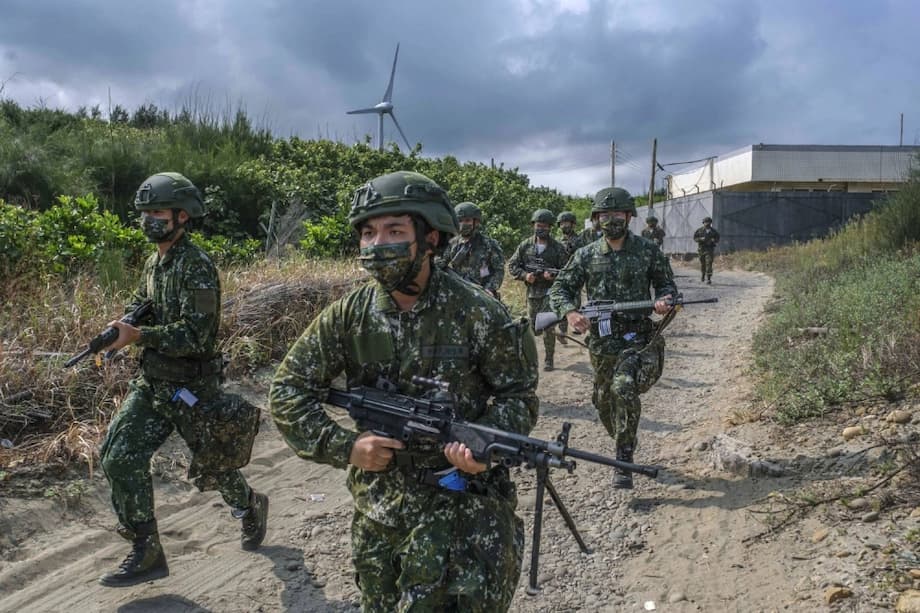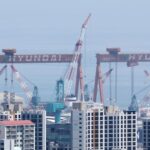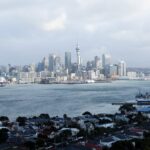A narrow window and a costly bet
Talk of an imminent attack on Taiwan has grown louder, fueled by China’s military buildup, frequent drills near the island, and speculation that unification is a core legacy goal for Xi Jinping. The most alarming claim is that the balance of power has shifted decisively in Beijing’s favor. Even with a stronger force, however, invading and occupying Taiwan would be one of the most complex and punishing operations of the modern era. Geography, logistics, politics, and economics all cut against a quick and decisive victory. The result is a strategic paradox for Beijing. It has more tools than ever to pressure Taiwan, yet the very real chance of failure remains a brake on the use of force.
- A narrow window and a costly bet
- Geography favors the defender
- The amphibious lift problem
- Taiwan’s defense has been reshaped
- Coercion short of invasion
- Would outside powers respond
- The economic shock of a conflict
- Drills, war games, and what they reveal
- What could trigger force, and what restraint looks like
- At a Glance
To seize the island, China’s People’s Liberation Army (PLA) would need to synchronize air, sea, land, cyber, space, and electronic warfare across a 130 kilometer stretch of water. The Taiwan Strait is not a placid moat. It is windy, shallow in parts, and turbulent for much of the year. A cross strait invasion would require moving and sustaining hundreds of thousands of troops and their equipment, overcoming mines and missiles, securing beachheads, breaking out into urban areas, and then pacifying a population that has shown little appetite for rule by Beijing. This is an operation that would dwarf the scale of famous amphibious assaults of the past.
Any campaign would also unfold under the eye of outside powers. The United States maintains strategic ambiguity, but its laws, posture, and alliances point to a response if coercion turns into a war. Japan, the Philippines, and others would face hard choices on access and support. Markets would convulse, supply chains would gum up, and sanctions could strike deep into China’s trade reliant economy. Beijing can raise military pressure and craft legal narratives to frame action as internal policing, yet the sum of risks makes a head on invasion a gamble with uncertain returns.
These realities shape a more sober assessment. China can punish and pressure Taiwan. It can disrupt. It can coerce. Turning that pressure into a successful occupation, in the face of determined defenders and possible foreign intervention, is another story entirely.
Geography favors the defender
Map the fight and the defender’s edge comes into focus. The strait is about 130 kilometers at its narrowest. Strong currents, frequent storms, and long swell limit safe crossing windows, most often in late spring and early autumn. Moving a large armada at scale during short weather windows invites detection and attack. Taiwan’s shores also work against a clean landing. The east coast is ringed by steep cliffs and deep water. The west coast offers shallow approaches, mudflats, and only a handful of beaches and ports that can take heavy gear. Those few points are well mapped, mined, and covered by sensors and fire.
The crossing
A cross strait convoy would be exposed for hours. Amphibious ships, civilian ferries, and supply vessels would have to sail within missile range of Taiwan and possibly allied forces. Sea mines, smart naval drones, submarines, and aircraft armed with anti ship missiles would stalk the formation. China’s naval and air escort would need to suppress enemy launchers ashore, protect the fleet, and keep air defenses intact under sustained attack. Even with a strong escort, the convoy’s size and speed make it a vulnerable target set.
Landing and breakout
Assuming a beachhead is established, the hardest work would begin. Taiwan’s beach access points are narrow and well surveyed. Heavy equipment can bog down on mudflats and tide dependent foreshore. Movement inland is channeled by rivers, mountains, and a limited number of road and rail corridors. Taipei sits in a basin, ringed by heights and accessible through choke points that defenders can demolish or block. Urban warfare in a city of millions favors small mobile teams, improvised obstacles, and ambushes. Even a modest resistance force can slow a mechanized thrust to a crawl.
Past amphibious assaults offer context, not a template. The Allied landing in Normandy required absolute air and naval supremacy, elaborate deception, and artificial harbors to sustain the force. Taiwan would demand greater distances, faster modern fires, and the ability to survive under persistent surveillance. The defender does not need to win in a day. It needs to deny a quick victory and let attrition, logistics, and politics erode the invader’s momentum.
The amphibious lift problem
Moving a modern army across water is a math problem that resists easy answers. The PLA has improved its lift with large amphibious transport docks and assault ships, but those hulls alone cannot carry the mass required for rapid conquest. Civilian roll on roll off ferries are expected to supplement military lift. They can move vehicles and troops quickly, yet they are large, lightly protected, and depend on functioning ports or safe offload points.
China appears to be experimenting with modular water bridge vessels that link into floating causeways, a concept reminiscent of the temporary harbors used in World War II. In theory, a causeway could let civilian ferries unload tanks and trucks onto shore where there is no port. In practice, the system would be slow to assemble, hard to protect, and extremely vulnerable to missiles, artillery, drones, and special operations. A single well aimed strike on the inshore segment could sever the chain and strand ships offshore.
Even if a first wave got through, sustaining a large land force is the real test. High tempo combat consumes fuel, ammunition, spare parts, medical support, and replacements at a startling pace. Every ton that crosses has to be pushed from beaches or makeshift piers onto roads that can be cut by strikes, landslides, or blown bridges. Naval landing zones would become magnets for fires. Without secure ports and airfields ashore, the invader’s logistics tail would be brittle.
Taiwan’s defense has been reshaped
Taiwan has shifted its focus from symmetric force on force battles to a porcupine model that aims to make the island too painful to swallow. That means layers of sensors, mobile missile launchers, sea mines, small fast attack craft, dispersed air defenses, and territorial units trained for guerrilla tactics. The idea is simple. Survive the first blows, keep launching accurate fire, and deny the PLA an easy expansion of control.
Shoreline defenses include concrete obstacles, anti landing spikes, and pre planned minefields. Mobile batteries armed with Harpoon and Hsiung Feng missiles can move, shoot, and hide. Short range air defenses and man portable missiles, like Stinger, complicate low altitude attacks and helicopter insertions. Taiwan’s air force faces a tough fight in the air, so its priority is to preserve aircraft, decoys, and runways, then reappear when opportunities open. Hardened shelters, rapidly repaired runways, and dispersed command posts improve the odds of staying in the game.
Inside the cities and mountains, the terrain favors defenders who know the ground. Urban combat saps attackers. Every intersection can be covered, every stairwell trapped, every street blocked by wrecks. In the mountains, ambushes and artillery from concealed positions can punish road bound columns. Civil defense training, reserve mobilization, and a focus on mission command aim to keep resistance coherent even if central nodes are disrupted.
Coercion short of invasion
Beijing has other levers to squeeze Taiwan without attempting a landing. A law enforcement led quarantine could slow or inspect shipping near major ports under the banner of safety or customs rules. China’s coast guard is the world’s largest, and it often operates with a maritime militia that blurs the line between civilian and state. Such a campaign would seek compliance from shipping companies and insurers without a formal blockade. It would be less escalatory than closing the strait outright, yet still impose real economic pain on Taiwan.
China has also built a domestic legal frame to justify future action and to turn narrative battles in its favor. The 2005 Anti Secession Law articulates conditions for using force if it deems peaceful unification impossible or if Taiwan moves decisively toward permanent separation. In state messaging, the issue is cast as an internal matter, not subject to external interference. That legal track is reinforced by laws granting broad authority to maritime agencies to regulate activity in claimed waters, and by the practice of declaring temporary exclusion zones during drills.
Chinese officials often cite the Anti Secession Law when laying out red lines. The law states that Beijing may use force if deemed necessary under specified conditions. As the statute puts it:
Chinese state law authorizes the use of non-peaceful means and other necessary measures if possibilities for a peaceful reunification are completely exhausted.
By presenting enforcement as domestic policing, Beijing aims to complicate responses by foreign navies and coast guards. The approach sits in a gray zone that avoids a clear tripwire while still ratcheting up pressure on Taiwan and on firms that must choose between routes and risks.
Would outside powers respond
Washington’s position is intentionally ambiguous. The Taiwan Relations Act of 1979 commits the United States to provide defensive arms and to maintain capacity to resist coercion. It does not create a formal defense treaty. Even so, the law put down a marker that still shapes policy debates today:
The United States regards any effort to determine the future of Taiwan by other than peaceful means, including by boycotts or embargoes, a threat to the peace and security of the Western Pacific area and of grave concern to the United States.
The form of any response would turn on the scale of Chinese action. A limited quarantine might prompt diplomatic pressure, sanctions on officials, help for Taiwan’s coast guard, and more patrols by allied navies. A blockade or invasion would likely trigger a wider set of military options. Those include intelligence support, cyber operations, early resupply of critical munitions, and strikes on Chinese naval assets if ordered. United States long range capabilities, such as stealth bombers, attack submarines, and aircraft armed with anti ship missiles, are designed to operate inside heavily defended regions. New systems such as the B 21 bomber are built for penetrating strikes and standoff attacks that can complicate Chinese planning.
The role of regional allies would be decisive. Japan controls access routes that matter for resupply and has developed doctrine and missile forces geared to defending remote islands. The Philippines has expanded access for United States forces at key sites facing the strait and the South China Sea. Australia, South Korea, and European partners could provide logistics, sanctions alignment, and maritime presence. Still, allied intervention is not guaranteed. Domestic politics, risk tolerance, and economic exposure would shape choices in each capital.
The economic shock of a conflict
A fight over Taiwan would rock the global economy. The island is a hub for advanced semiconductors, including chips made by the world’s most advanced manufacturers. Disruption would hit everything from phones and servers to cars and medical devices. Shipping lanes through the strait and nearby waters carry a large share of global trade. Rerouting traffic would add cost and time, and insurance premiums would spike.
China’s economy is woven into global markets. Sanctions on banks, export controls on critical technologies, and informal boycotts could sap growth. Energy imports would come under stress, especially if insurers restrict coverage or if naval disruption spreads. Taiwan would suffer immediate damage, yet China would pay a heavy price as well. Markets dislike uncertainty. A prolonged confrontation could accelerate diversification away from Chinese supply chains and chill investment.
Drills, war games, and what they reveal
China’s military has staged frequent air and sea exercises around Taiwan, including large shows of force that simulate encirclement. Near Taiwan, reactions vary. Many residents carry on with daily life even as alerts and headlines spike abroad. The gap between perceptions reflects a hard truth. Drills can be scaled for messaging, but they do not remove the real constraints that an invader would face when logistics, weather, and enemy fire start to bite.
Taiwan’s military tests its own plans each year in the Han Kuang exercise cycle. Tabletop simulations and field drills stress command resilience, backup communications, and joint responses to gray zone harassment and high intensity war. The focus is on practical problems, like moving command posts after strikes, keeping aircraft dispersed and flying, and coordinating coastal fires under electronic attack. The aim is not to win a scripted scenario. It is to expose gaps and fix them.
Civil organizations in Taipei have also hosted operational level tabletop exercises with retired generals from Taiwan, Japan, and the United States to examine a range of Chinese actions through 2030. These games often begin with harassment and escalate to assaults on outlying islands, then a full attempt to land on Taiwan proper. The lessons reinforce what the geography and the math already suggest. A rapid knockout is unlikely. The defender’s job is to survive and complicate the attacker’s plan at every step.
What could trigger force, and what restraint looks like
Chinese leaders link the issue to sovereignty and national rejuvenation, yet they also signal patience when costs look high. Timelines often cited in public debates, such as 2027, are at most planning benchmarks. They are not hard deadlines. Trigger events that could push Beijing toward force include a formal Taiwanese declaration of independence, domestic crises that drive a need for nationalist rallying, or a catastrophic miscalculation during a military encounter at sea or in the air.
Restraint has its own logic. Beijing can continue to isolate Taipei diplomatically, pressure its economy with targeted restrictions, and conduct frequent military patrols to wear down defenses. Legal steps, like announcing straight baselines or extending law enforcement jurisdiction, are designed to create a sense of inevitability without a formal war. Each move tests international resolve and normalizes a larger Chinese presence near the island. For Taiwan and its partners, the counter is a mix of steady defense investments, visible patrols that uphold navigation rights, and clear statements that coercion carries costs.
At a Glance
- Invading Taiwan would require the PLA to execute a complex joint campaign across a rough 130 kilometer strait under constant attack.
- Limited beaches, treacherous approaches, and urban choke points favor Taiwan’s defense and hinder a fast breakout inland.
- China’s amphibious lift still relies on civilian ferries and experimental floating causeways, which are vulnerable to missiles, mines, and drones.
- Taiwan fields layered defenses, from mobile anti ship missiles and sea mines to dispersed air defenses and territorial units for urban and mountain combat.
- Beijing can escalate pressure short of war with a law enforcement style quarantine, gray zone tactics, and legal moves to frame action as domestic enforcement.
- The Anti Secession Law sets conditions for the use of force, while United States law says coercion against Taiwan is a matter of grave concern.
- United States and allied responses could include sanctions, resupply, intelligence support, and, if ordered, long range strikes and maritime interdiction.
- A conflict would jolt global markets, disrupt chip supplies, and reshape trade routes across East Asia.
- Frequent Chinese drills and Taiwanese war games highlight growing pressure, yet they also reveal the scale of the logistics and terrain challenges China would face.
- The most likely near term risks are coercive measures short of invasion. The chance of outright invasion rises if political triggers or miscalculation occur.




